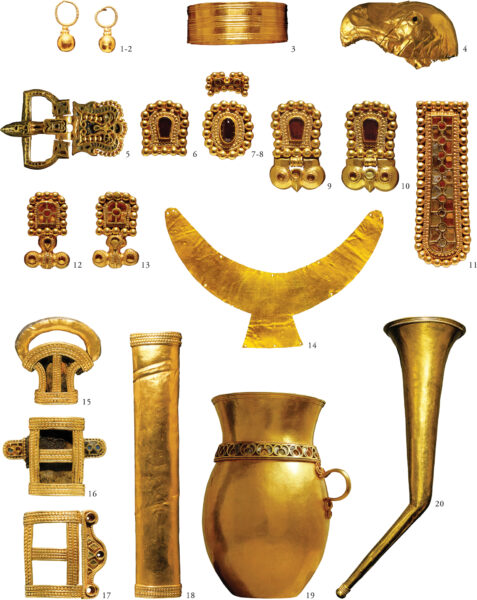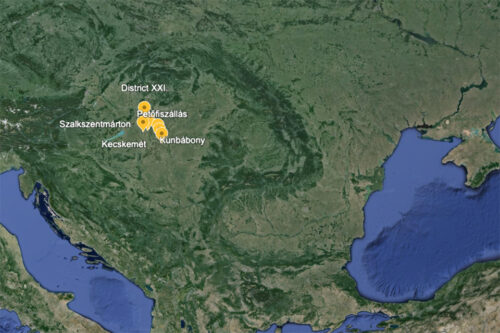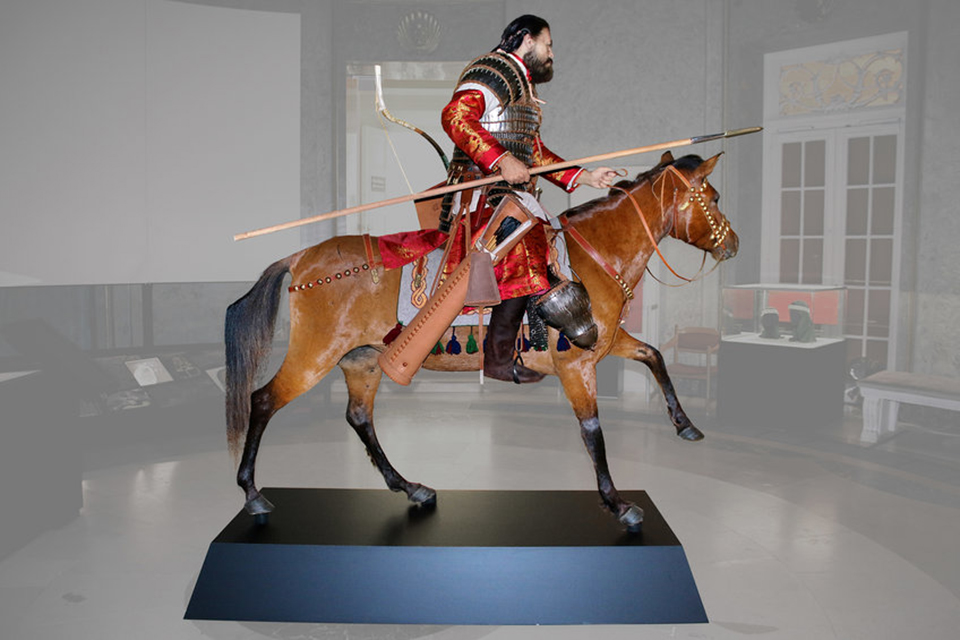The Avar Khaganate ruled the Carpathian Basin all the way to Caucasus between 557-793. New genetic studies identify them as a people which migrated from Mongoli

In Roman times, the Carpathian Basin was settled by a succession of migrating people, among which were the Goths, and more or less ruled by the Romans to the west and the Sarmatians to the east. Later, the Huns arrived, followed by the Gepids and the Longobards, and finally the Avars.
As reported by Theophanes and Menander, the Byzantine Emperor Justinian received an embassy from the Avars in 557-8 and allied himself with the newcomers. Afterwards, the Avars established themselves near the Alans north of the Caucasus. Ten years later, they joined the Lombards (from the Elbe area) and defeated the Gepids in the Middle Danube region. After the Lombards migrated to Italy in 568, the Avars ruled the Pannonian basin for more than 200 years, until Charlemagne routed them out in 793, and carried off a dragon’s treasure from their major fortified city, called “The Ring of the Avars”. Traditionally, the Treasure of Nagyszentmiklós has been identified to belong to the Avars’ cultural milieu. However, more than 600 settlements and 100.000 excavated burials have yielded impressive collections of finds, elucidating the living conditions and the Avars’ material culture.
For many years, it has been accepted wisdom that the Avars were not a distinct migratory people, but rather a mixed band of motley people and adventurers gaining the upper hand against the more sedentary Gepids.

Recent studies carried out by Gnecchi-Ruscone and his team have challenged this idea by studying the aDNA of the remains found in 66 Avar graves, among these the eight holding the richest collections of the famous golden grave goods. The obtained paleogenomic evidence from Avar sites in Hungary has univocally placed the Avar elites’ origin in Mongolia and also documented the speed with which they covered the more than 5000 km from Mongolia to the Caucasus.
Thus, while the genetic makeup of less privileged individuals showed a genetic heterogeneity, the elite individuals presented genomes of which 90% were for more than a hundred years of North Eastern Asian origin. Later, the profiles were diluted to 70-80%, the dilution being of Western Eurasian origin. The scientists concluded that the migrating horde must have been sizable as no inbreeding was detected. What inbreeding had taken place stemmed from the maternal gene pool which had been diluted with a 30% influx from the Western gene pool. Socially, the Avars were strictly patrilineal. Also, the grave goods were connected with male burials, while the females were “barely visible”
Until recently, the exact centre of their realm has been difficult to pinpoint. The new genomic studies, however, show exactly where the core – the non-diluted elites – lived: More precisely the Danube-Tisza interfluve, on the great plains south of Budapest dominated by sand, riverine marshes and steppe vegetation.
The research has been carried out as part of the This research is a part of HistoGenes, an ERC-funded project investigating the period of 400 to 900 CE in the Carpathian Basin from a multidisciplinary perspective.
FEATURED PHOTO:
Avar Knight. Source: Press Release © Ilona C. Kiss/Deri Museum in Debrecen
SOURCE:
Press Release:
Origins of the Avars elucidated with ancient DNA. Multidisciplinary research team sheds light on the 1,400-year-old mystery about the genetic origins of the Avar elite. Published by the Max-Planck Gesellschaft April 2022
READ ALSO:
The origin of the Carpathian Avar elites revealed
By Rosa Fregel
Cell Genomics (2022), Vol 2 No 6, Open Source
Ancient genomes reveal origin and rapid trans-Eurasian migration of 7th century Avar elites
By Guido Alberto Gnecchi-Ruscone et al
Cell April 2022 Open Source
Genetic insights into the social organisation of the Avar period elite in the 7th century AD Carpathian Basin
By Veronika Csáky et al
Nature Scientific Reports (2020), Vol 10 no 948
READ MORE:
